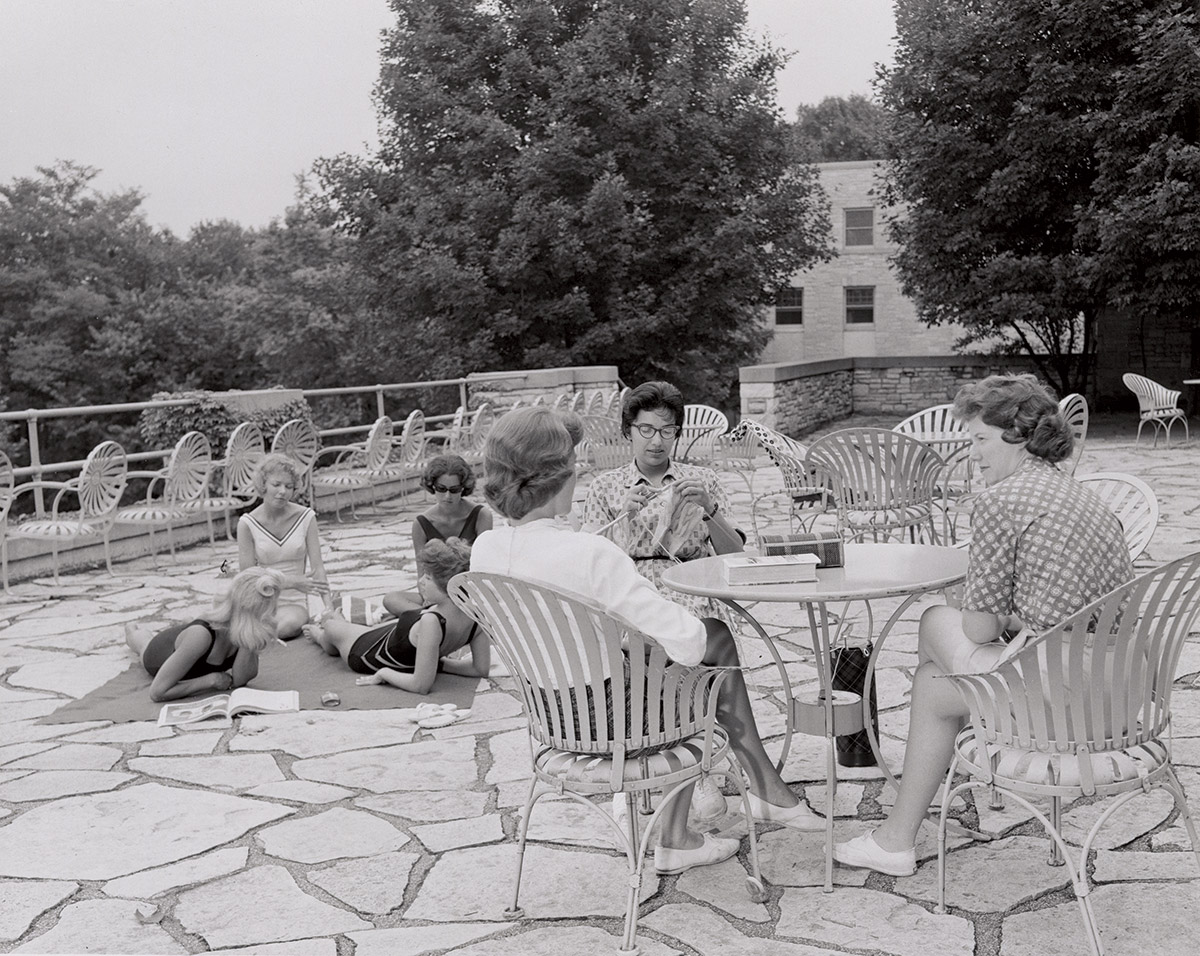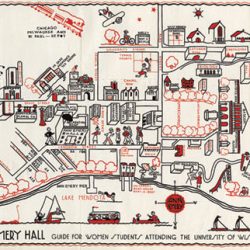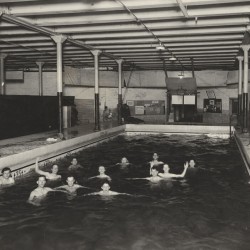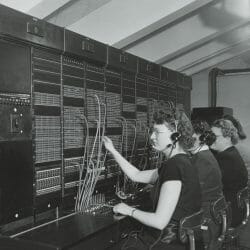The Rise and Fall of Ladies Hall

No men allowed: a group of 1960s female students relaxes in the Elizabeth Waters Residence Hall courtyard. The dorm would be the last on campus to remain segregated by gender. UW Archives 2018s00424
By 2005, Elizabeth Waters Residence Hall was the last standing gender-segregated dorm on campus. For many alumni of that time, it was a familiar arrangement. For many students, it was antiquated — weird, even. Wrote one in the Badger Herald: “The time has come for UW to end this wretched, backward invocation of sexism and mindless promotion of prudery.” A year later, it became a coed dorm, ending a long era.
The UW’s first-ever purpose-built dorm was also its first women’s dorm. Ladies Hall was constructed in 1871 and was later renamed Chadbourne Hall after former chancellor Paul Chadbourne, partly in retribution for his stubborn opposition to coeducation. The paradoxical naming streak continued for the second women’s dorm (and oldest functioning dorm on campus today), Barnard Hall — after former chancellor Henry Barnard, who opposed university housing entirely because of its high costs.
The earliest residents of Ladies Hall needed permission to leave the dorm outside of usual class hours, and they were only allowed to see visitors during scheduled receptions in common areas. The hall’s principal also advised the women on their habits and how to comport themselves in public.
Many strict housing rules continued into the latter half of the 20th century. Between the ’40s and ’70s, parents received a letter from the university before the start of each academic year informing them that female students under the age of 21 were required to live in university-approved housing or provide a guardian’s written permission to live unsupervised off campus.
Curfews were commonplace. According to a 1949 housing document, women who tried to return to their dorms after 10:30 p.m. on weeknights would be locked out. Only a housemother had access to the building’s keys, so residents needed permission to be gone overnight or to stay out past curfew. Late-night studying at the library? Too bad. Freshmen could request a key for curfew extension until 12:30 a.m. once per semester, while seniors earned the luxury of requesting a key twice per week. Exceptions were made for university-sanctioned events and for Daily Cardinal staffers.
For many years, men could only enter women’s dorms during certain evening hours and were never allowed to stay overnight. The board of regents approved coed housing, separated by floor (and later by wing), for select UW residence halls in 1972. All halls are now coed, and most floors and wings stopped being separated by gender in 2011. Students are free to come and go as they please. We suspect they wouldn’t accept anything less.
Published in the Summer 2019 issue



Comments
Geoffrey Fox March 21, 2025
In Fall 1963 Sellery Hall had a male wing and female wing.
scott wilcott March 22, 2025
’71 I went up into Chad with a young lady. Exiting the elevator she announced, “Male on floor !” Slam, slam, slam went the doors.
Susan (Seymour) Swanson March 23, 2025
I moved into Sellery Halll in the fall of 1965. Sellery and. Witte were both coed by wing. Only common area was the front entry with lounge, office, etc. All doors in Sellery were locked at 11:30 pm and a housefellow had to sit there all night. If you were late, your name was turned over to your student-run Judicial Board (J Board) and they meted out punishment: campusing. You had to be in the dorm 24/7, unable to leave except for class, meal, work. The SSE dorms didn’t give a rat’s ass so it was only a formality. Rules were still in place in 1969…except for seniors. The WHA worked it the “in loco parentis” belief that it was the role of the university to protect the innocent young and inexperienced women from the slavering arms of the men who only had one thing on their minds. But that’s what the Hotel Lorraine was for.